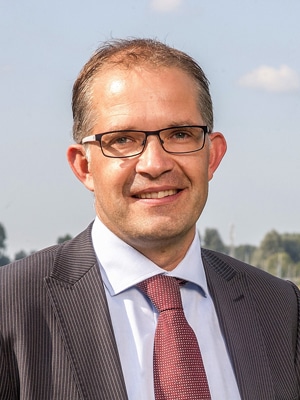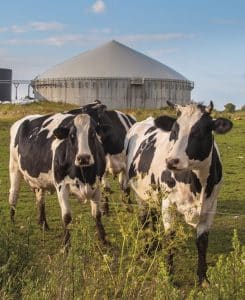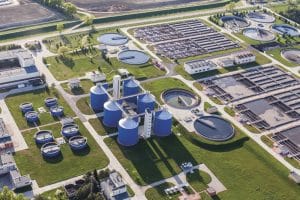
Getting the most out of your biogas plant: interview with DMT’s Harmen Dekker
Ahead of his presentation at the 1st International Biogas Conference in Athens on 3-4 May, we get the thoughts of DMT International’s Business Development Manager Harmen Dekker on maximising biogas output
What are the benefits of treating organic wastes through anaerobic digestion (AD)?
Using AD to treat organic wastes is a no-brainer. AD can treat organic wastes from three sources: municipal wastes, agricultural wastes, and human wastes, turning them into not only renewable energy but also valuable nitrogen and phosphorous, crucial minerals for restoring depleted soils. Any technology that can be used to produce both energy and fertiliser and which can also potentially re-use the waste CO2 is a clear no-brainer.
 What are the most effective ways of maximising biogas production?
What are the most effective ways of maximising biogas production?
Every AD system operates differently. Using AD to treat waste water, for example, can be problematic as certain types of sludge contain chemical structures that don’t break down easily. In this case, a standard AD system won’t allow the operator to maximise the biogas output. A further problem is that the digestate (treated sludge) in most cases needs to be incinerated, which accounts for a large portion of the total cost of a waste water treatment plant.
For cases like this, there are complementary techniques for simultaneously maximising biogas output and minimising digestate output. DMT has used pre-treatment technologies to do exactly this and to reduce the AD processing time to a few days. A wide range of different pre-treatment techniques are currently being researched, ranging from enzyme and mineral mixtures to mechanical and chemical pre-treatment, which holds a promise for improved yield and lower cost for the future. Many of these technologies are particularly appropriate for waste water treatment due to the consistent feedstock yields, but they have an enormous future across all sectors of the AD industry.
Why is it important to remove contaminants from feedstocks?
There’s a general movement towards treating feedstocks that are more difficult to digest and that contain more contaminants. These contaminants can be dangerous to human health at high concentrations but can also potentially have a negative impact on the biology equilibrium in the digester. They can also ruin connected technologies such as combined heat and power (CHP) or upgrading equipment. Operators will want to maximise the lifetime of their digesters, and the movement towards more difficult feedstocks will require expert knowledge on improved contaminant removal (pre-treatment) techniques.
What are the largest potential growth areas for biogas around the world?
In terms of emerging markets for biogas, there’s huge potential in Asia and South America, where more awareness of the benefits of AD needs to be created.
We also need to be aware of new techniques that can handle large amounts of complex feedstocks such as woody and lignin structures. Many of these techniques (such as gasification) have not yet been commercialised, but there are a lot of companies and universities around the world working hard to implement these over the coming years.
 How can biogas technologies help companies to reduce their emissions?
How can biogas technologies help companies to reduce their emissions?
AD technology effectively controls the natural degrading process of organic materials and prohibits the emittance of methane to the air, capturing it instead. Although it is debatable whether the naturally occurring process releases as much methane and carbon dioxide to the air as is produced by the digestion process, there is no doubt that emissions are greatly reduced under AD conditions.
Biogas utilisation is therefore very important. By creating electricity (through CHP) or bio-natural gas (through upgrading) one can offset the use of fossil gas and therefore make a real contribution to the reduction of global emissions.
DMT, for example, has a monitoring system that can calculate the amount of CO2 savings it has made by implementing its upgrading installations around the world. At time of writing, DMT has enabled savings of 6.8 million tonnes of CO2-equivalent, the equivalent of 426 million metres cubed of methane, enough to heat the households in a town the size of the UK’s Sheffield for a year. Or to put it differently, this is equal to 2.2 billion kilometres of car travel.
Europe still has great potential for reducing emissions through AD, but other countries in South America and Asia, for example, still have a huge untapped potential to implement professional AD operations and biogas utilisation in their heating and transport networks. When done right, biogas technologies can make a huge impact on the reduction of CO2 emissions.


